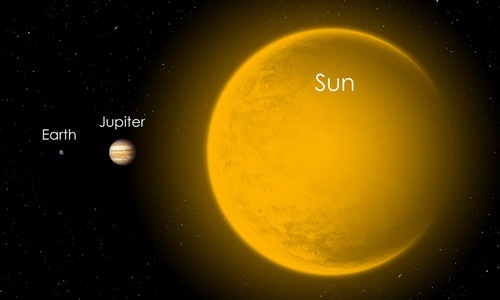Structure and fusion. Main article: Solar core. The core of the Sun extends from the center to about 20–25% of the solar radius. It has a density of up to 150 g/cm3. Convective zone. Earth orbits the Sun, but the stars are so far away that stellar parallax is undetectable to the naked eye. There is no stellar parallax because Earth remains stationary at the center of the universe.
StarChild Question of the Month for February 2000
Question:
Does the Sun move around the Milky Way?Answer:
Yes, the Sun - in fact, our whole solar system - orbits around thecenter of the MilkyWay Galaxy. We are moving at an average velocity of 828,000 km/hr. But evenat that highrate, it still takes us about 230 million years to make one complete orbitaround the MilkyWay!
In astrology we say the Sun begins in Aries and moves through Taurus, Gemini, Cancer, Leo, etc. Precession means to move backwards so as the Sun orbits Sirius, the stars move the opposite way. Currently we have just moved out of Pisces and into Aquarius or 30 degrees of the circle closer to Sirius. The Sun (which orbits the centre of the Milky Way galaxy and travels at a speed of 220 km/s in relation to it) and Pluto (which travels slower than any of the planets at 4.7 km/s in relation to the Sun) have gone: The Sun 1,589 km Pluto 34 km.
The Milky Way is a spiral galaxy. We believe that it consists of a centralbulge, 4 majorarms, and several shorter arm segments. The Sun (and, of course, the restof our solarsystem) is located near the Orion arm, between two major arms (Perseus andSagittarius).The diameter of the Milky Way is about 100,000 light-years and the Sun islocated about28,000 light-years from the Galactic Center. You can see a drawing of theMilky Waybelow which shows what our Galaxy would look like 'face-on' and thedirection in whichit would spin as viewed from that vantage point. Also shown, is thelocation of the Sun inthe big picture view of our Galaxy.
It is interesting to note that recent observations by astronomers suggestthat the Milky Wayis in fact a 'barred spiral galaxy', not just a 'spiral galaxy'. This meansthat rather than asimple spherical bulge of gas and stars at its center, it has instead a'bar of stars' crossingthe central bulge. It might look something like the image shown below ofthe barred spiralgalaxy known as NGC1073. But we still rotate around the center just the same!
Orbits The Sun

The StarChild site is a service of theHigh Energy Astrophysics Science ArchiveResearch Center (HEASARC),Dr. Alan Smale (Director), within theAstrophysics Science Division (ASD) atNASA/GSFC.
Orbits The Sun Meteor
StarChild Authors: The StarChild Team
StarChild Graphics & Music: Acknowledgments
StarChild Project Leader: Dr. Laura A.Whitlock
Curator:
Responsible NASA Official:
